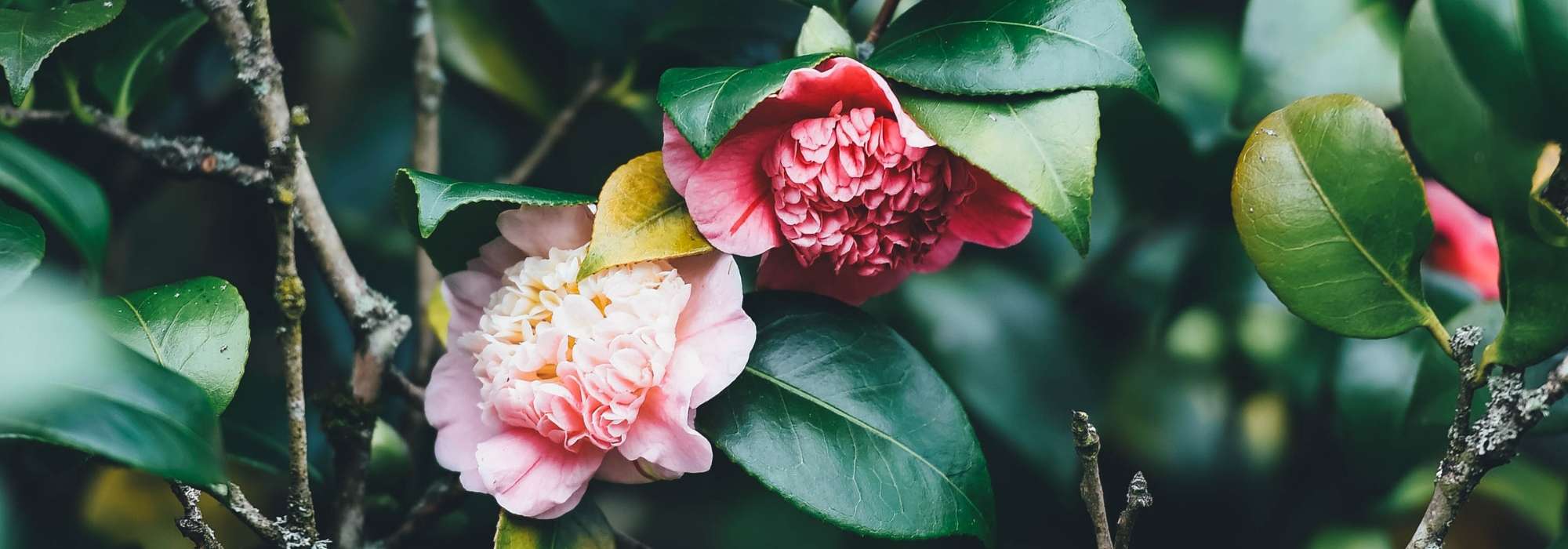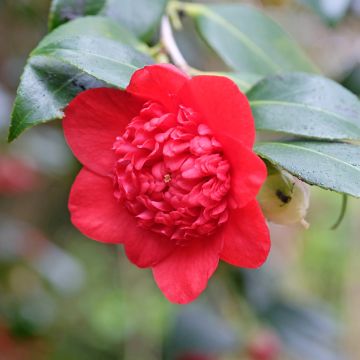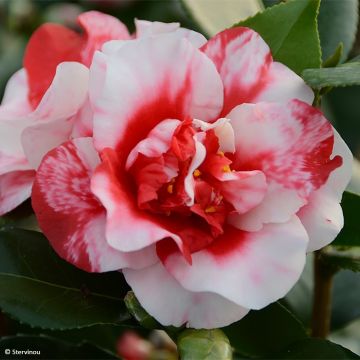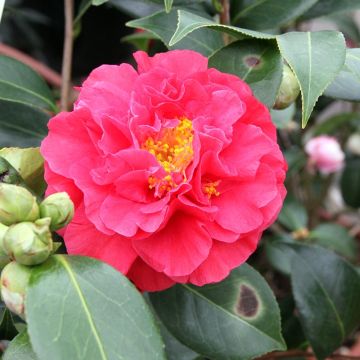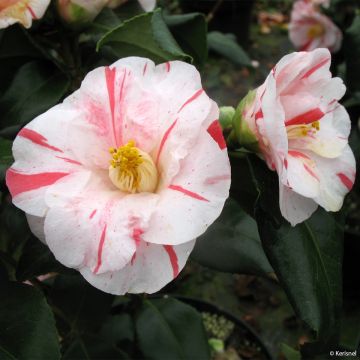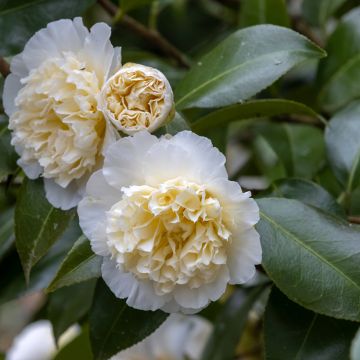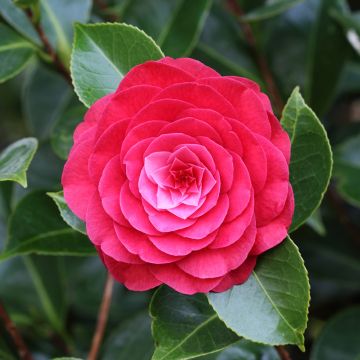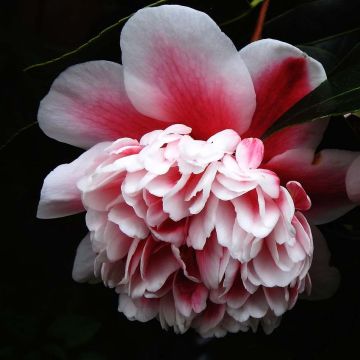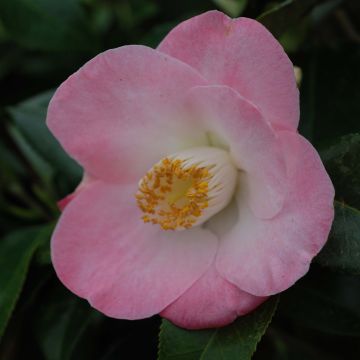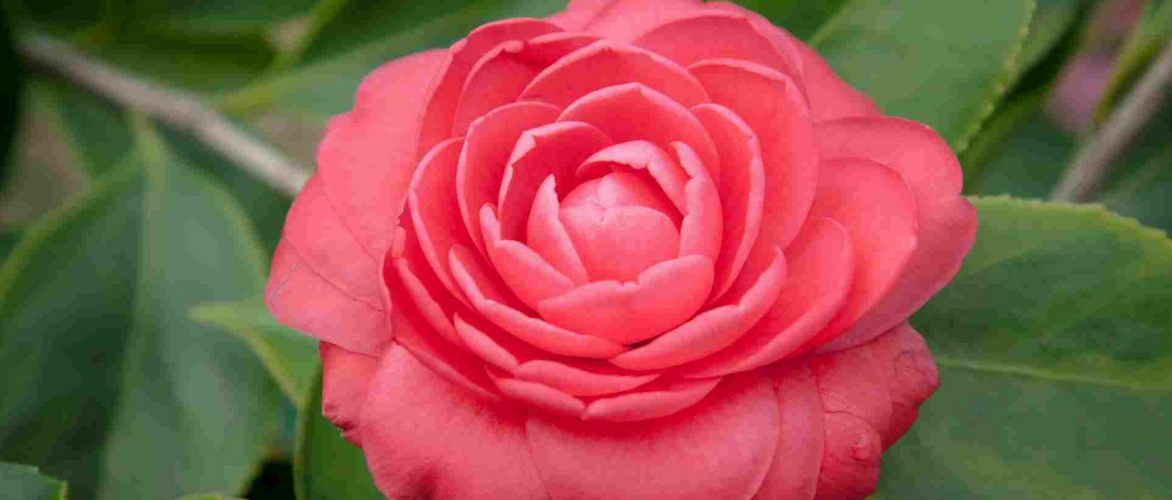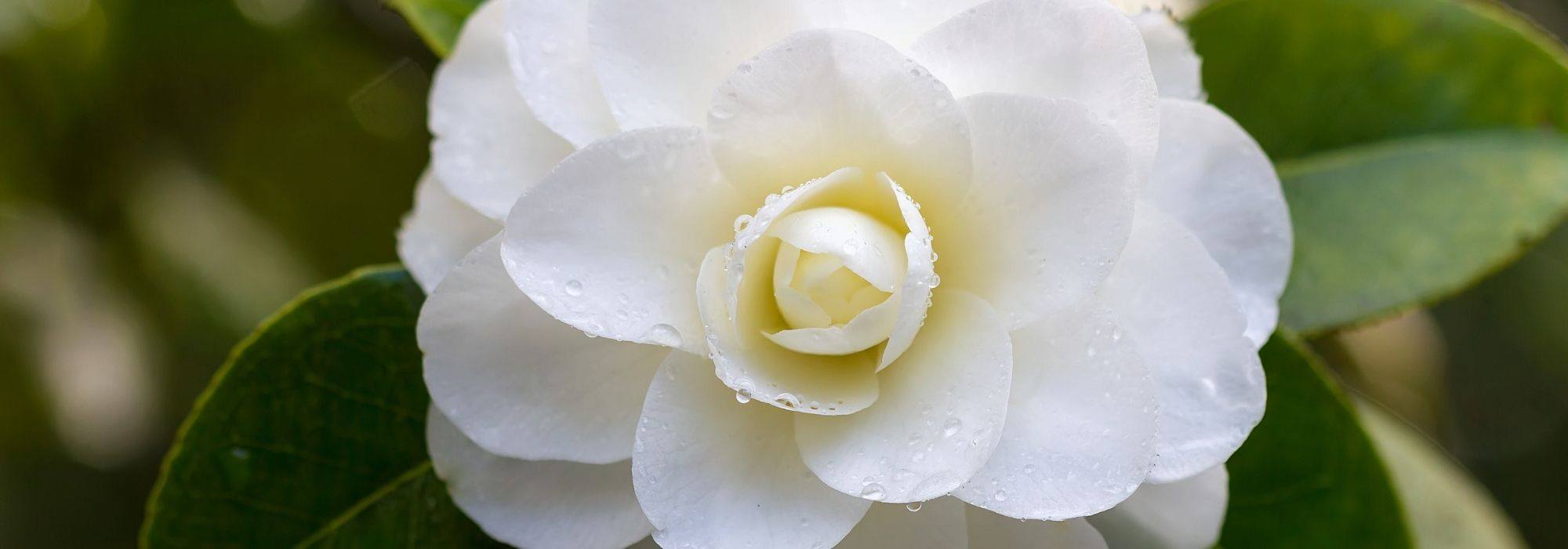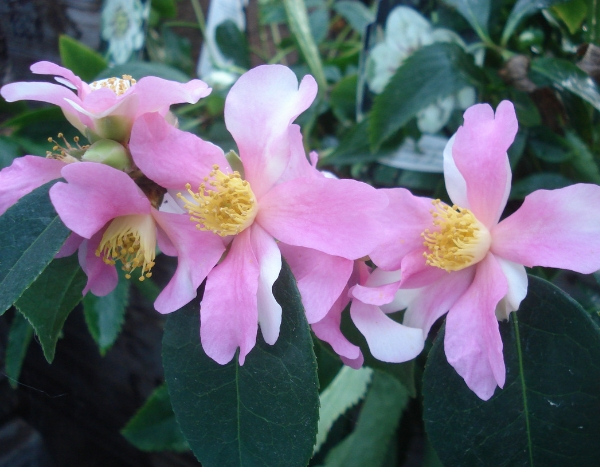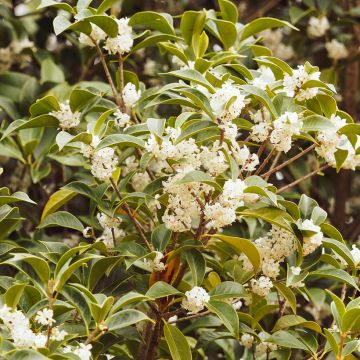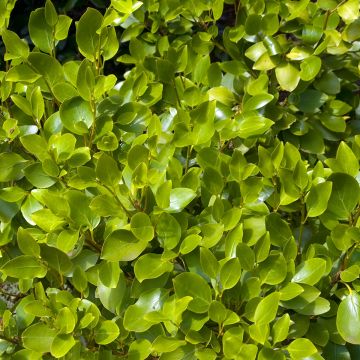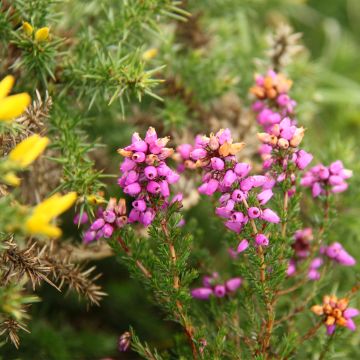

Camélia Tulip Time - Camellia (x) williamsii
Camellia williamsii Tulip Time
Camellia x williamsii Tulip Time
Special offer!
Receive a €20 voucher for any order over €90 (excluding delivery costs, credit notes, and plastic-free options)!
1- Add your favorite plants to your cart.
2- Once you have reached €90, confirm your order (you can even choose the delivery date!).
3- As soon as your order is shipped, you will receive an email containing your voucher code, valid for 3 months (90 days).
Your voucher is unique and can only be used once, for any order with a minimum value of €20, excluding delivery costs.
Can be combined with other current offers, non-divisible and non-refundable.
Home or relay delivery (depending on size and destination)
Schedule delivery date,
and select date in basket
This plant carries a 24 months recovery warranty
More information
We guarantee the quality of our plants for a full growing cycle, and will replace at our expense any plant that fails to recover under normal climatic and planting conditions.
Would this plant suit my garden?
Set up your Plantfit profile →
Description
Camellia (x) williamsii 'Tulip Time' is part of a series of hybrids known for their hardiness and ease of cultivation. They were obtained by crossing the famous Camellia japonica with C.saluenensis, a robust Chinese species much less known to gardeners. 'Tulip Time', sought after by collectors, is one of the most original: on this beautiful bush with an open habit, numerous small single flowers resembling fully open pink tulips are born. They flower for 3 months, from winter to spring, on elegant evergreen foliage. This excellent variety tolerates sunny sites as well as slightly dry soils in summer.
The hybrid Camellia 'Tulip Time' belongs to the family of Theaceae. It is a variety selected in California in 1981. Its growth is rather fast for a camellia while its habit is particularly airy, although a sunny site will promote slightly denser vegetation. Its slender branches are slightly trailing, which allows them to be trained on a trellis. By the age of 10 it will measure approximately 1.40 m (4-5 ft) in height and 1.20 m (4 ft) in spread. Ultimately, the bush can reach 3.50 m (12 ft) in height and 2.60 m (9 ft) in spread, under ideal conditions. The generous flowering lasts from February to April. The branches are covered with single flowers, 8 cm (3 in) in diameter, composed of 6 long channelled and outwardly arched petals, surrounding a beautiful cluster of yellow stamens. They start with a deeper pink colour at the opening, and fade slightly at the base of the petals when fully bloomed. These flowers gracefully fade, dropping their petals like snow on the ground.
Its evergreen foliage consists of elliptical leaves, 7.5 cm (3 in) in length and 3.8 cm (1.5 in) in width, leathery, finely dentate, dark green and glossy on the upper side. While this bush is hardy down to -12°C (10.4 °F) in the ground, its flowering may be compromised by snow, icy winds, and temperatures below -5°C (23 °F), especially if grown in a pot.
Camellia williamsii 'Tulip Time' particularly thrives in mild and humid climates and performs best in coastal regions, in humus-rich and well-drained soil. It will tolerate full sun in favourable climates, but will perform best in partial shade, protected from scorching sun and strong winds. Plant e.g. in an informal hedge or within a shrub border, alongside other camellias or other acid-loving plants like Rhododendrons, Azaleas, Cornus kousa, Japanese maples, or Kalmia latifolia. But it would be a shame to drown this magnificent variety in a tangle of foliage or flowers. Truly decorative in the garden, it deserves a prominent place near the entrance of the house or not far from a walkway. 'Tulip Time' is particularly suitable for training, for example to adorn an east-facing wall.
Note: unlike rhododendrons, camellias tolerate pot cultivation very well, including non-dwarf varieties. Their compact tufted root system is content with a relatively small space, as long as it is regularly nourished and watered (with non-calcareous water).
Camellia williamsii Tulip Time in pictures
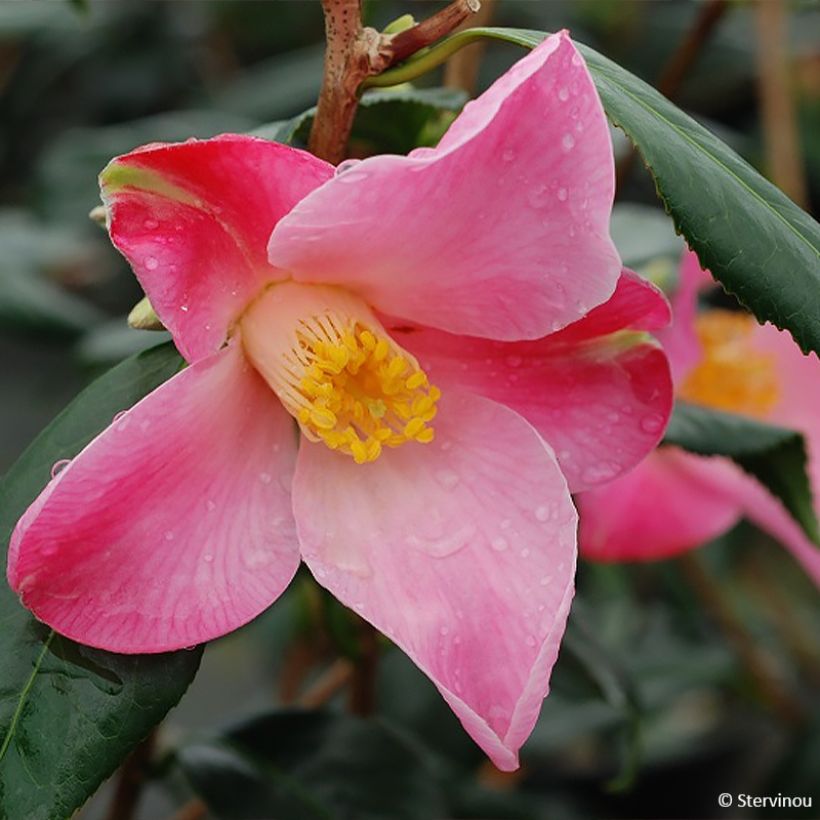

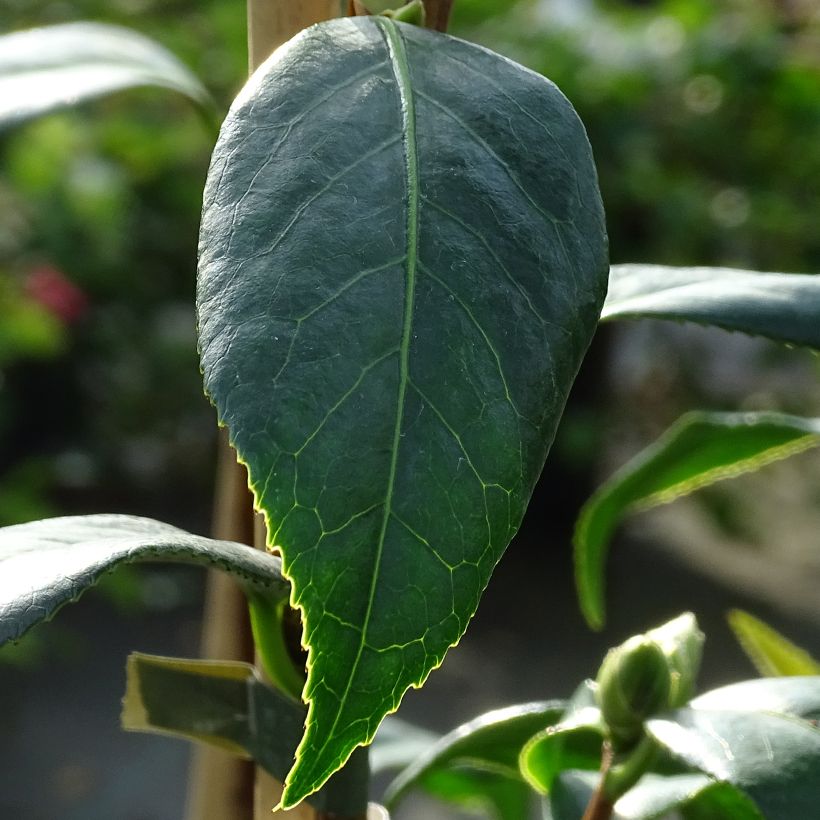

Plant habit
Flowering
Foliage
Botanical data
Camellia
x williamsii
Tulip Time
Theaceae
Cultivar or hybrid
Other Traditional Camellia
View all →Planting and care
Camellia williamsii 'Tulip Time' accepts full sun in favourable (e.g. warm coastal) climates, but it performs best in partial shade or even shade, protected from scorching sun and sheltered from strong winds. Plant in a fresh, humus-rich, slightly acidic, fertile, and well-drained soil. Once well-rooted, the plant can tolerate moderate summer drought (in northern Europe). Do not plant the bush too deeply; the top of the root ball should be covered with 3 cm (1.2 in) of soil. In winter cover it with a 5-7 cm (2-3 in) thick mulch composed of leaf compost and shredded bark. Beware of late frosts that can damage the flowers and buds. During dry periods water the bush (preferably with non-calcareous water) to prevent the dropping of flower buds. It is recommended to plant camellias in autumn to promote good root development and better flowering from the first year. Possible diseases include chlorosis caused by excessive limestone, brown spots caused by burns on leaves exposed to full south, sooty mould, scale insects, and weevils.
Pruning is not necessary but if required should be done sparingly just after flowering, before the emergence of new spring shoots. Most camellia hybrids do not recover from hard pruning.
Planting period
Intended location
Care
Planting & care advice
This item has not been reviewed yet - be the first to leave a review about it.
Similar products
Haven't found what you were looking for?
Hardiness is the lowest winter temperature a plant can endure without suffering serious damage or even dying. However, hardiness is affected by location (a sheltered area, such as a patio), protection (winter cover) and soil type (hardiness is improved by well-drained soil).

Photo Sharing Terms & Conditions
In order to encourage gardeners to interact and share their experiences, Promesse de fleurs offers various media enabling content to be uploaded onto its Site - in particular via the ‘Photo sharing’ module.
The User agrees to refrain from:
- Posting any content that is illegal, prejudicial, insulting, racist, inciteful to hatred, revisionist, contrary to public decency, that infringes on privacy or on the privacy rights of third parties, in particular the publicity rights of persons and goods, intellectual property rights, or the right to privacy.
- Submitting content on behalf of a third party;
- Impersonate the identity of a third party and/or publish any personal information about a third party;
In general, the User undertakes to refrain from any unethical behaviour.
All Content (in particular text, comments, files, images, photos, videos, creative works, etc.), which may be subject to property or intellectual property rights, image or other private rights, shall remain the property of the User, subject to the limited rights granted by the terms of the licence granted by Promesse de fleurs as stated below. Users are at liberty to publish or not to publish such Content on the Site, notably via the ‘Photo Sharing’ facility, and accept that this Content shall be made public and freely accessible, notably on the Internet.
Users further acknowledge, undertake to have ,and guarantee that they hold all necessary rights and permissions to publish such material on the Site, in particular with regard to the legislation in force pertaining to any privacy, property, intellectual property, image, or contractual rights, or rights of any other nature. By publishing such Content on the Site, Users acknowledge accepting full liability as publishers of the Content within the meaning of the law, and grant Promesse de fleurs, free of charge, an inclusive, worldwide licence for the said Content for the entire duration of its publication, including all reproduction, representation, up/downloading, displaying, performing, transmission, and storage rights.
Users also grant permission for their name to be linked to the Content and accept that this link may not always be made available.
By engaging in posting material, Users consent to their Content becoming automatically accessible on the Internet, in particular on other sites and/or blogs and/or web pages of the Promesse de fleurs site, including in particular social pages and the Promesse de fleurs catalogue.
Users may secure the removal of entrusted content free of charge by issuing a simple request via our contact form.
The flowering period indicated on our website applies to countries and regions located in USDA zone 8 (France, the United Kingdom, Ireland, the Netherlands, etc.)
It will vary according to where you live:
- In zones 9 to 10 (Italy, Spain, Greece, etc.), flowering will occur about 2 to 4 weeks earlier.
- In zones 6 to 7 (Germany, Poland, Slovenia, and lower mountainous regions), flowering will be delayed by 2 to 3 weeks.
- In zone 5 (Central Europe, Scandinavia), blooming will be delayed by 3 to 5 weeks.
In temperate climates, pruning of spring-flowering shrubs (forsythia, spireas, etc.) should be done just after flowering.
Pruning of summer-flowering shrubs (Indian Lilac, Perovskia, etc.) can be done in winter or spring.
In cold regions as well as with frost-sensitive plants, avoid pruning too early when severe frosts may still occur.
The planting period indicated on our website applies to countries and regions located in USDA zone 8 (France, United Kingdom, Ireland, Netherlands).
It will vary according to where you live:
- In Mediterranean zones (Marseille, Madrid, Milan, etc.), autumn and winter are the best planting periods.
- In continental zones (Strasbourg, Munich, Vienna, etc.), delay planting by 2 to 3 weeks in spring and bring it forward by 2 to 4 weeks in autumn.
- In mountainous regions (the Alps, Pyrenees, Carpathians, etc.), it is best to plant in late spring (May-June) or late summer (August-September).
The harvesting period indicated on our website applies to countries and regions in USDA zone 8 (France, England, Ireland, the Netherlands).
In colder areas (Scandinavia, Poland, Austria...) fruit and vegetable harvests are likely to be delayed by 3-4 weeks.
In warmer areas (Italy, Spain, Greece, etc.), harvesting will probably take place earlier, depending on weather conditions.
The sowing periods indicated on our website apply to countries and regions within USDA Zone 8 (France, UK, Ireland, Netherlands).
In colder areas (Scandinavia, Poland, Austria...), delay any outdoor sowing by 3-4 weeks, or sow under glass.
In warmer climes (Italy, Spain, Greece, etc.), bring outdoor sowing forward by a few weeks.






























